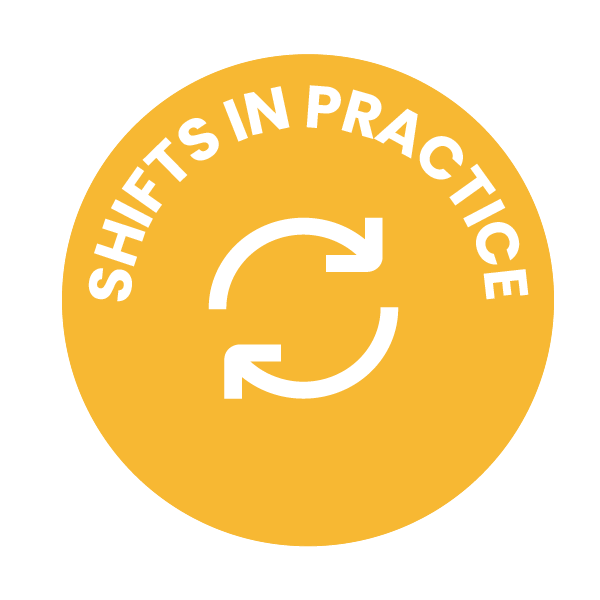Three Trends Propelling Education in 2023
As we begin a new year, I have been thinking about trends in education we are seeing right now. In this article, I outline three trends that many school leaders and teachers are thinking about, taking about, and learning about right now.
Trend 1: Artificial Intelligence (AI)
In 2020 we all needed more optimism in our lives, and there was a lot of talk about the pandemic providing the perfect opportunity to create what some referred to as a “slingshot moment”, where schools would use the challenges being faced as an opportunity to propel our thinking and practices forward in a dramatic way. We can see now that that metaphor was incomplete.
In fact, a slingshot moment refers to the idea that sometimes we have to go back to what is comfortable in order to gain the momentum we need to move forward in a new direction. This year has been one in which schools have gone back to what’s comfortable - a Warm Hug period, where being on campus together was the salve students and educators needed.
There are a lot of initiatives schools are pursuing in this post-Covid era. One is that there seems to be a lot of interest in building new buildings on campuses in a move that not just embraces being back together, but signals to school communities that being on campus is, in fact, schools’ greatest value. And, it just might be. But, the other area that there seems to be a growing sense of momentum in is around innovative initiatives to pursue to implement new ideas into programs, pedagogy, and processes. During the pandemic, schools did a really hard thing, and now it’s time to think deeply about what we learned and what it means moving forward.
There’s an additional accelerant that has entered the picture - Artificial Intelligence (AI). Over the past few months several new tools have been released that are raising awareness, and new questions, in light of these tools’ abilities to create based on a user’s inputs. There are many incredible technological advances we’ve witnessed over the past few decades - the birth of the internet, ubiquitous mobile computing, group video calls - that have significantly changed the way we work, interact, and learn. All of those advances will be overshadowed by what AI brings. Schools need to reflect deeply on what those impacts will be on what they do and how they do it.
How this manifests itself in the curriculum will be the big question for educators to grapple with. The question of where does AI’s work end and a student’s work begin will be central to how educators design curriculum and learning experiences and will drive the types of work students will be asked to create. And that word, create, is going to be central to everything. If AI can now create, what do we want our students to do? How do we want students to demonstrate their understanding of a topic? Tests and quizzes or authentic demonstrations of understanding? A choice lies ahead.
So, while the metaphor of a "slingshot moment" may have been incomplete, it is clear that the challenges we faced in 2020 have provided an opportunity for schools to move forward in new and innovative ways. From building new buildings on campus to embracing new technologies such as AI, schools are finding ways to not just recover from the pandemic, but to thrive in a post-Covid world. It is important for schools to take the time to reflect on the lessons learned during the pandemic and to think deeply about how these experiences can shape the future of education. By embracing new ideas and technologies, schools can continue to provide students with the best possible education and prepare them for success in the world beyond the classroom.
Trend 2: Year-Round School
Professionals in every field need to regularly upskill and education is no different. Whether it’s the advent of new technologies or strategic plans that call for new approaches to curriculum design and implementation, teachers are encouraged to continually learn. One challenge that educators face is when to find time to acquire and apply those new skills when the days and weeks of the school year are filled working with students, providing feedback, and the plethora of other duties working in a school requires.
There just isn’t enough time, which leaves summer, when educators are on vacation, but are often also expected to work. Schools are going to need to consider how to build professional learning into the role descriptions of their faculty, provide time to engage in those opportunities, and compensate teachers for that time. To do that schools will need to consider moving to twelve month calendars, which will create tremendous opportunities to develop programs that will improve academic performance, provide more flexible programming and scheduling, reduce summer learning loss, increase student wellness by allowing for more breaks throughout the year, and open up possibilities for new revenue streams, including potentially increasing student bodies.
Each one of these benefits could have enormous implications for what school looks like. Imagine a school year that has year-round opportunities for outdoor trips and global programs instead of just during the summer; X-terms available to students at multiple points throughout the year; flexible schedules that create options for when classes meet… There are tremendous possibilities.

Trend 3: Learning From Other Industries
There’s a lot to learn from organizations and companies that aren’t schools, and a lot to learn from learning organizations that aren’t K-12 institutions. Beyond business processes such as SWOT (Strength/Weakness/Opportunity/Threat) analyses or two-by-two grids, schools will need to start looking at organizational structures that promote health and well-being, promote positive cultures, and allow individuals in different roles to focus relentlessly on the primary duties of their jobs.
There are two areas over the past few years that we at GOA have restructured to make move forward with this goal. One is that we created a Design Lab, which supports our student program by working with teachers and curriculum specialists to design and build student-centered learning environments and experiences. We’ve created a schedule to cyclical review and revamp all our courses on a regular basis so that the curriculum, including the content and assignments, are fresh and updated. Between those deep reviews teachers are continually making tweaks and improvements, but a deep refresh is built into our systems and calendars. By doing this we allow our faculty to focus on coaching students and providing feedback during the term, which is where we want their attention to be.
Another area is around culture, where we created a position last year titled Director of Organizational Culture to “drive the vision for creating an equitable and inclusive organization, as well as delivering an exceptional employee experience, including recruitment, onboarding, professional development, performance management, and retention.” This role exists in many other industries under the umbrella of Chief People Officer, and is one that schools should begin to consider adding to their leadership teams.
Whether it’s how we want our programs to be designed and implemented or created a role where the culture of the organization is their sole focus, the roles we create help to signal what’s important to an organization, and empowering people with explicit authority to lead that work is important.
This is a pivotal time to be in education as we are witnessing one of the greatest technological advancements we have ever seen come into view. It will be up to schools to think innovatively about how to harness these tools as they will shape our students’ futures.
We’ve shown that we can do hard things. Let’s go do them.
For more, see:
Impact and Outcomes: Stories and Data from Our Work with Students, Educators, and Schools
How Do We Cultivate a Coaching Culture at Our Schools and Organizations?

This post is part of our Shifts in Practice series, which features educator voices from GOA’s network and seeks to share practical strategies that create shifts in educator practice. Are you an educator interested in submitting an article for potential publication on our Insights blog? If so, please read Contribute Your Voice to Share Shifts in Practice and follow the directions. We look forward to featuring your voice, insights, and ideas.
GOA serves students, teachers, and leaders and is comprised of member schools from around the world, including independent, international, charter, and public schools. Learn more about Becoming a Member. Our professional learning opportunities are open to any educator or school team. Follow us on LinkedIn and Twitter. To stay up to date on GOA learning opportunities, sign up for our newsletter.
